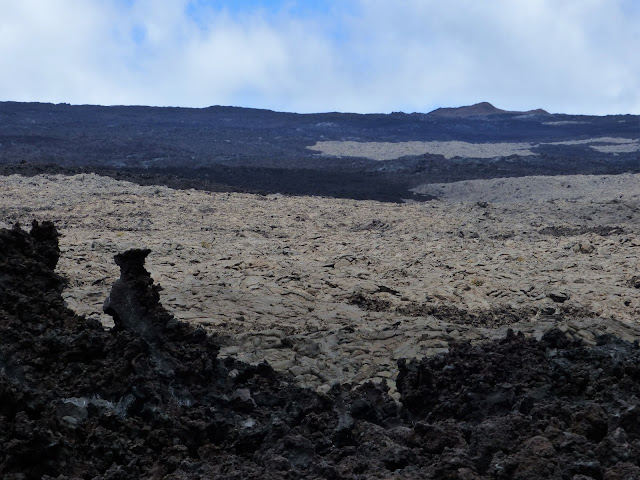 |
| This picture is not tilted. That's the upper slope of Mauna Loa |
The road begins near the summit of Saddle Road between Mauna Loa and Mauna Kea. Most visitors head north up Mauna Kea to the Onizuka Center for Astronomical Studies. It has bathrooms, a gift shop, telescope viewing at night and grand vistas by day. It's a welcoming place. And it's only a six mile drive. If you go south towards the Observatory, the single lane road travels 17 miles, and at about the 10,000 foot level, you leave all earthly life behind (at least it is well hidden). These are lava flows, many if not most less than a century old, and what life is possible at 11,000 feet keeps getting extinguished by hot lava. It is as desolate a place as I have ever seen.
Would you want to visit this barren blasted place? Perhaps. It depends on what you want to get out of a visit to the islands. If you are in stellar shape, the road's end is a trailhead for the shortest hiking access to the top of Mauna Loa nearly 3,000 feet higher (about 3.8 miles to the summit ridge and another 3 or so to the actual summit). It's a case of instant altitude sickness just waiting to happen. If you want to see one of the most unearthly places on Earth, it may be worth your time. If you haven't seen the important parts of Hawai'i Volcanoes National Park, then your precious time might be better spent on the south side of the gigantic mountain.
Speaking for myself, I was fascinated the whole way.



2 comments:
Are there bugs up there, or do they stop when the plant life stops?
I'm sure there are at least a few bugs that get pushed in the wind. My visit was brief, but the only vegetation I saw at the highest levels was a few small shrubs by the road that might have been seeded by the road gravel.
Post a Comment